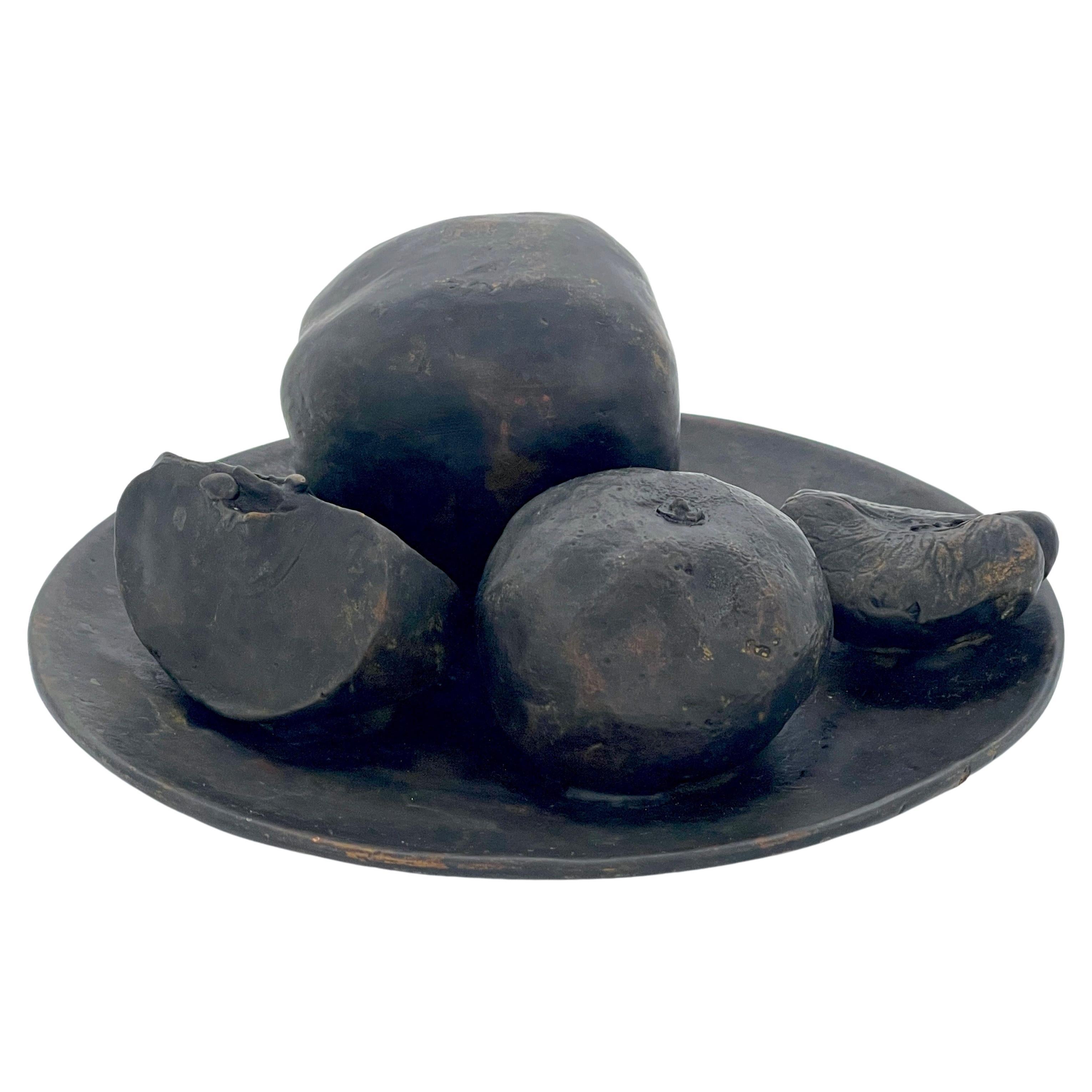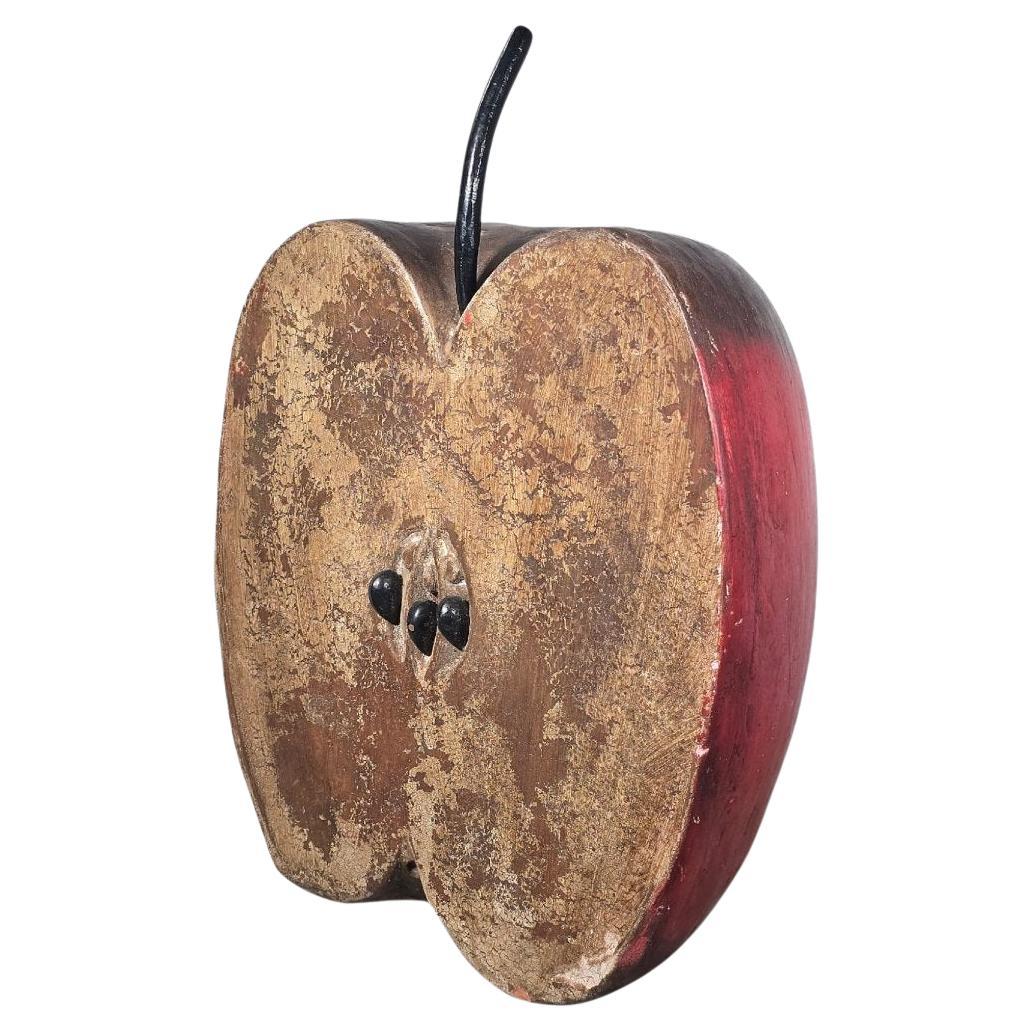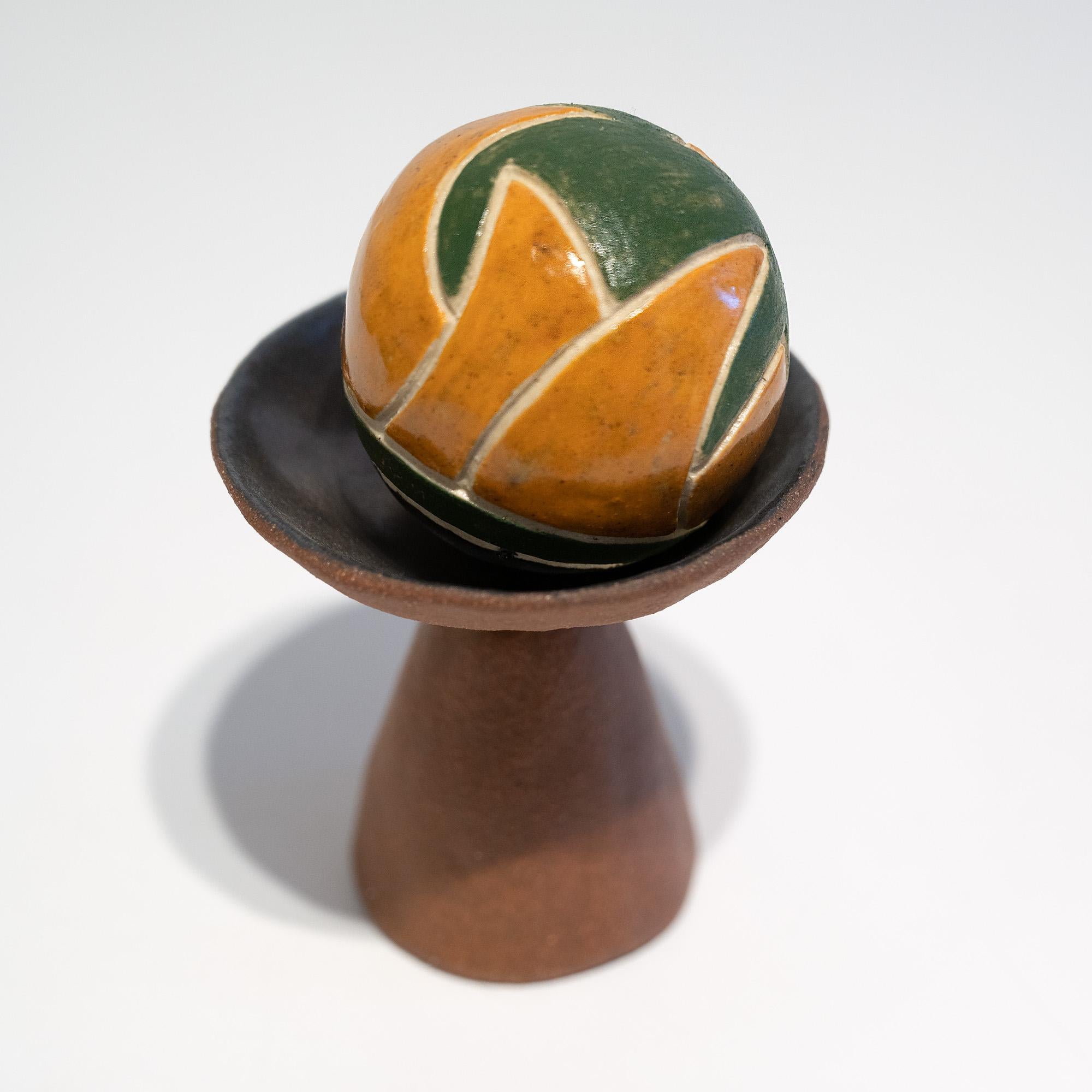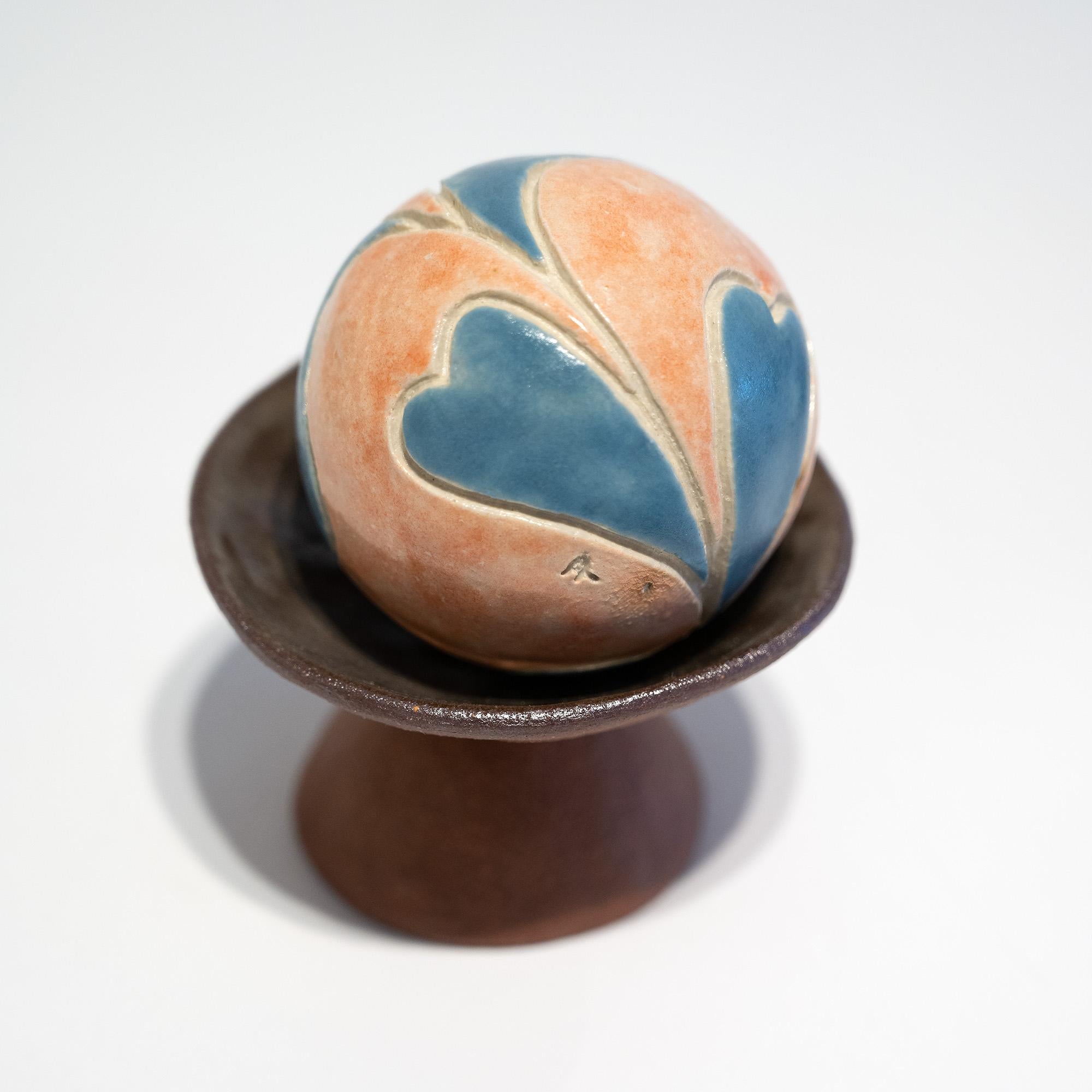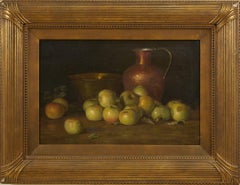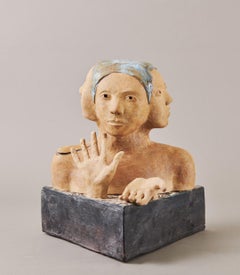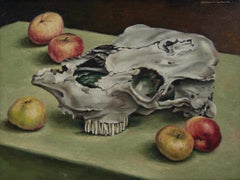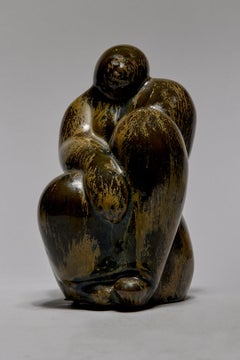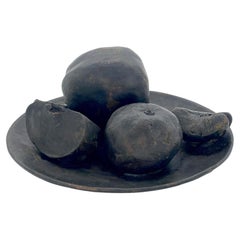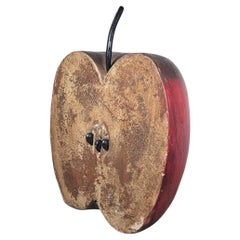Items Similar to Bag of Apples, Mid-Century Ceramic Still Life Sculpture, Cleveland School
Want more images or videos?
Request additional images or videos from the seller
1 of 5
Lawrence Edwin BlazeyBag of Apples, Mid-Century Ceramic Still Life Sculpture, Cleveland Schoolc. 1950
c. 1950
$1,550
£1,171.61
€1,346.39
CA$2,158.37
A$2,401.09
CHF 1,258.68
MX$29,340.77
NOK 16,027.76
SEK 15,087.92
DKK 10,050.26
Shipping
Retrieving quote...The 1stDibs Promise:
Authenticity Guarantee,
Money-Back Guarantee,
24-Hour Cancellation
About the Item
Lawrence Blazey (American, 1902-1999)
Bag of Apples, c. 1950
Ceramic
6 x 14 x 5.5 inches, including base
A graduate of the Cleveland School of Art in 1924, Lawrence Blazey supported himself as an advertising artist, product development engineer, and designer. He had further studies at the American Designers Institute, Cranbrook Academy of Art, and the Slade School of Art in London. When he returned to Cleveland, he taught night classes at his alma mater and gave lectures on ceramics and industrial and architectural design.
He is noted for his distinctive, precise watercolor technique of outlining combined with gestural brush-strokes, a method he used often in rendering night scenes with billowing smoke and approaching twilight.
About the Seller
5.0
Vetted Professional Seller
Every seller passes strict standards for authenticity and reliability
Established in 1975
1stDibs seller since 2022
34 sales on 1stDibs
Typical response time: 1 hour
- ShippingRetrieving quote...Shipping from: Beachwood, OH
- Return Policy
Authenticity Guarantee
In the unlikely event there’s an issue with an item’s authenticity, contact us within 1 year for a full refund. DetailsMoney-Back Guarantee
If your item is not as described, is damaged in transit, or does not arrive, contact us within 7 days for a full refund. Details24-Hour Cancellation
You have a 24-hour grace period in which to reconsider your purchase, with no questions asked.Vetted Professional Sellers
Our world-class sellers must adhere to strict standards for service and quality, maintaining the integrity of our listings.Price-Match Guarantee
If you find that a seller listed the same item for a lower price elsewhere, we’ll match it.Trusted Global Delivery
Our best-in-class carrier network provides specialized shipping options worldwide, including custom delivery.More From This Seller
View AllEarly 20th Century Still Life w/ Green Apples & Copper Vessels, Cleveland School
By Adam Lehr
Located in Beachwood, OH
Adam Lehr (American, 1853–1924)
Still life with green apples and copper vessels, 1908
Oil on canvas
Signed lower right
16 x 24 inches
27 x 35 inches, framed
Exhibited:
WOLFS Gallery...
Category
Early 1900s Figurative Paintings
Materials
Oil
Four Three Two One, 21st Century Contemporary Surrealist Ceramic Sculpture
Located in Beachwood, OH
Kristen Newell (American, b. 1989)
Four Three Two One, 2015
Stoneware, porcelain and acrylic
Signed and dated on bottom
16 x 15 x 14 inches
Kristen Newell was born in a small town on the coast of Massachusetts, where from a very early age, she demonstrated a strong propensity for the arts. Important additional inspiration came from her family and from the family of a childhood friend, where Kristen found herself surrounded by the work of Paul Manship, her friend’s grandfather and one of America’s greatest sculptors.
With increased focus on her art, along with winning numerous awards throughout high school, Newell eagerly enrolled in the arts program at University of Vermont and augmented her studies with a valuable year at the Cleveland Institute of Art.
Upon graduation, Newell moved back to Cleveland to begin her art career and started participating in group shows, including River Gallery and the Ohio State...
Category
2010s Contemporary Figurative Sculptures
Materials
Porcelain, Stoneware, Acrylic
Still Life with Apples and Skull, Figurative Oil Painting by Ohio Artist
By Clarence Holbrook Carter
Located in Beachwood, OH
Clarence Holbrook Carter (American, 1904-2000)
Still Life with Apples, 1940
Oil on canvas
Signed and dated upper right
18 x 24 inches
Clarence Holbrook Carter achieved a level of national artistic success that was nearly unprecedented among Cleveland School artists of his day, with representation by major New York dealers...
Category
1940s American Modern Still-life Paintings
Materials
Oil
Mid-Century Ceramic Sculpture of a Seated Female, Cleveland School Artist
Located in Beachwood, OH
Walter Sinz (American, 1881-1966)
Seated Female, c. 1940
Ceramic
6 x 3.5 x 3.5 inches
Walter A. Sinz was an American sculptor born in Cleveland, Ohio on July 13, 1881. Sinz’s fathe...
Category
1940s Figurative Sculptures
Materials
Ceramic
When the Lights Go On Again, Mid Century Cast Stone, Cleveland School Artist
Located in Beachwood, OH
Walter Sinz (American, 1881-1966)
When the Lights Go On Again, 1943
Cast Stone
10 x 4.5 x 8 inches
Walter A. Sinz was an American sculptor born in Cleveland, Ohio on July 13, 1881. ...
Category
1940s Figurative Sculptures
Materials
Cast Stone
Faces Vase, 20th Century Ceramic Drama Masks, Italian Artist
By Marcello Fantoni
Located in Beachwood, OH
Marcello Fantoni (Italian, 1915-2011)
Faces Vase
Ceramic
Signed on bottom
10.5 x 5.5 x 6 inches
Marcello Fantoni was an Italian sculptor, ceramicist, metalworker, multi-media artist...
Category
Mid-20th Century More Art
Materials
Ceramic
You May Also Like
Apples of Eden, Porcelain Art Decor, Installation, Metal, Concrete, Gold, Gift
Located in Granada Hills, CA
Artist: Kristina Oganezz
Work: Art Installation / Art decor
Medium: Porcelaine, Concrete
Year: 2024
Color: Metal Gold
Title: Apples of Eden
Set Size: H 5.5" x Diameter 6.0" inch, 1...
Category
2010s Impressionist Still-life Sculptures
Materials
Concrete, Gold Leaf
Apples of Eden, Porcelain Art Decor, Installation, Metal, Concrete, Gold, Gift
Located in Granada Hills, CA
Artist: Kristina Oganezz
Work: Art Installation / Art decor
Medium: Porcelaine, Concrete
Year: 2024
Color: Metal Gold
Title: Apples of Eden
Set Size: H 5.5" x Diameter 6.0" inch, 1...
Category
2010s Impressionist Still-life Sculptures
Materials
Concrete, Gold Leaf
Modern Still Life Bronze Sculpture 'Manzanas y Naranjas' by Rafael Muyor
Located in West Palm Beach, FL
Rafael Muyor Spanish, Madrid, born 1943
Bronze Sculpture ‘Manzanas y Naranjas’ (Apples and Oranges )
Signed on the center bottom.
A beautiful bronze sculpture of ‘Manzanas y Naranj...
Category
20th Century Spanish Modern Figurative Sculptures
Materials
Bronze
$1,996 Sale Price
20% Off
Terracotta Apple Sculpture – Tuscany, 1950s
Located in Madrid, ES
"Terracotta Apple Sculpture – Tuscany, 1950s"
Materials: Terracotta and bronze
Origin: Tuscany, Italy
Period: 1950s
Dimensions: 44 x 35 x 18 cm
Unique decorative sculpture in the sh...
Category
20th Century Italian Modern Figurative Sculptures
Materials
Terracotta
Golden Apples 37
Located in Santa Fe, NM
Hand Built and glazed ceramic. Free standing, two pieces (sphere and stand).
My interest in clay as an artistic medium began in 1984. Like most beginners in the medium, I focused ...
Category
2010s Abstract Abstract Sculptures
Materials
Ceramic
Golden Apples 39
Located in Santa Fe, NM
Hand Built and glazed ceramic. Free standing, two pieces (sphere and stand).
My interest in clay as an artistic medium began in 1984. Like most beginners in the medium, I focused ...
Category
2010s Abstract Abstract Sculptures
Materials
Ceramic
